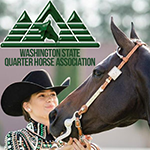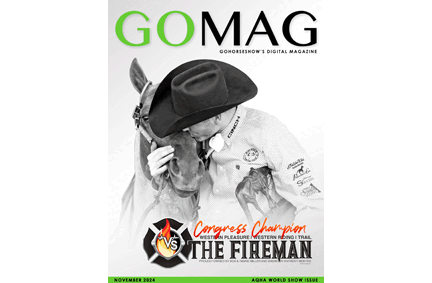Horses need travel agents, vaccinations and blood tests before heading overseas.
Note: this article is meant to create awareness of issues surrounding exporting horses from the United States. If you plan to export a horse from the United States, please visit with your local Animal and Plant Health Inspector Service’s area vet in charge for the latest regulations regarding export.
PART TWO
Vaccines and Blood Tests
Irmgaard accepts four new quarantine horses every two weeks. “As soon as a horse arrives, we call USDA to let them know we are beginning quarantine here,” she says. “The state veterinarian inspects each horse and checks the health papers and Coggins.”
Animal and Plant Health Inspection Service Area Veterinarians in Charge advise USDA-accredited veterinarians of the tests, examinations, certifications or quarantines required for a particular shipment of animals. The accredited veterinarian then completes the necessary procedures and forwards a health certificate to the AVIC.
When all requirements have been met, AVIC endorses the export health certificate, which authorizes the animals to be moved to the designated port of export.
Horses in quarantine with Irmgaard are immediately brought up to date on all vaccinations, tested for vesicular stomatitis and other diseases. At 20 to 21 days, blood is pulled and retested for equine infectious anemia, using only the Agar gel immunodiffusion test. Stallions must be tested for equine viral arteritis.
Irmgaard studies each horse daily, checking temperatures and looking for signs of a traveling illness.
“You don’t know where these horses are from sometimes, so you have to be very careful and observant,” she says. “In the spring, when horses are traveling from cold areas to hot ones, or where it’s cold outside and warm inside, sickness is more common.”
If a horse in quarantine arrives ill or becomes ill, it is taken to isolated confinement on another part of the facility. A state veterinarian visits the farm daily to inspect and discuss any problems.
USDA reports that until the 19th century, exported animals were routinely shipped overseas without adequate space, ventilation, food or water. An 1891 reform law authorized USDA to develop standards for the humane accommodation of animals transported by ship.
In practice, export health procedures are an ongoing process involving the examination of livestock, the performance of certain tests and the certification of animals for export. This work is done by veterinarians employed by APHIS, as well as practicing veterinarians accredited by USDA.
Paperwork
According to USDA, international health certificates for the export of animals from the United States must be completed by the accredited veterinarian who certifies herd and animal health status, conducts tests and records test results for the individual animals being exported.
Completed and signed international health certificates for the export of animals from the United States must be endorsed by a veterinary services area office to be valid. Veterinary services area offices are a branch of USDA.
The United States has minimal requirements for animals to be exported to other countries. Each country, however, may have specific health requirements for the entry of animals – requirements that are established by the importing country, not the United States. Export requirements frequently change. Export certificates are official documents and should be typewritten, accurate and complete.
Forwarding agents should be able to take care of these details for you.
Travel In the Skies
Horses travel by air in containers that look similar to horse trailers. Designed for warmbloods, a typical container easily holds three roomy box stalls. One professional groom with veterinary experience is required to be on board with the shipment, in addition to one handler per three horses. Handlers stay with the horses during takeoff and landing, and they ensure that the horses are comfortable throughout the flight, offering hay and water. Many owners opt to fly with their horses, as well as trainers and clinicians who travel abroad regularly.
When extra-large horses are shipped, containers can be manipulated to carry only two horses per container, if needed.
Technically, a five-hour resting period is required before a horse can be loaded onto a plane or ship, but this regulation could differ, depending on how far the horse had to travel before arriving at the port of export. At the port of export, an APHIS port veterinarian examines the animals, makes sure they receive the required rest period and supervises the loading of the animals onto the ship or plane.
“In all the years I’ve done this, I’ve never seen a problem during flight,” Irmgaard says. “It’s very nice. I try to go with the horses every six weeks to make sure everything is going well.”
Horses tend to shake their heads when air pressure changes, but that’s typically the biggest adjustment of all. Random turbulence, to a horse, feels like a bump in the road.
Procedures are slightly different for livestock shipped through land borders, such as Canada and Mexico.
Irmgaard’s work is essentially finished as soon as the horse arrives at his destination. Because customs and regulations vary greatly from country to country, it’s easiest to hire a local agent to handle paperwork and details on the ground.
PART 1
Many of these numbers represent horses shipped across borders for international competitions, but sales denote the majority. As American Quarter Horse disciplines such as reining and cutting expand internationally, trade will follow, and sales are likely to rise. And with the 2010 Alltech FEI World Equestrian Games just days away, horses have already started arriving from across the globe. But how does it work? What are the steps needed to ship a horse overseas or across international borders? What does it cost?
Equine Travel Agent
Unless you’re familiar with international laws and taxes, customs, foreign languages and animal disease, exporting a horse can be a nightmare. That’s why Camia Lane, agriculture marketing specialist for the United States Department of Agriculture, recommends working with an agent and a freight forwarder. Lane oversees transportation in all U.S. agriculture areas, and she notes that livestock take extra care to send across any border.
“It can be tricky, especially if you are a first-time exporter,” Camia says. “Regulations are changing all the time, embargoes might be in place you’re unaware of, and there are critical forms to be filled out before the animal can be exported.”
Pauls Valley, Oklahoma, resident Irmgaard Geul is an equine freight forwarder, or as she puts it, “a travel agent for horses.” In 1994, Irmgaard relocated to Oklahoma from Holland, where she and a partner ran an equine import/export quarantine facility. Her experience in the industry, coupled with her multicultural connections, make the process as simple as possible.
“I noticed that quarantine was not as good in many places,” she says. “The horses were too skinny, and a lot of people had problems shipping horses.”
Her solution was a one-stop station that specializes in horses. Her 120-acre facility, named Nedpoint Quarter Horses, provides a worry-free solution for horse owners unfamiliar with international export and import regulations. She accepts horses for import and export. Most of her business is conducted between the United States and European countries.
For an average of $3,600, Irmgaard will accept your horse for quarantine at her station for 30 days and implement all normal vaccinations and critical paperwork. The fee also includes a new halter and lead rope, daily care, feed and hay, transportation to the airport, an airline ticket to select destinations in Europe, paperwork preparation for arrival and a connection with a designated agent to accept the horse in the new country. Typical quarantine for importing into most European countries is 30 days.
As the seller, if the horse you sold is a high-end animal, $3,600 might be a nominal fee that’s well worth the service. Irmgaard, however, thinks the buyer should be responsible for this, in most cases.
If the seller can build it onto the cost of the horse, that is a good idea,” she says. “I encourage people to have the buyer pay the cost of quarantine.”









